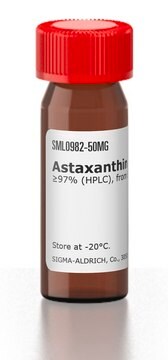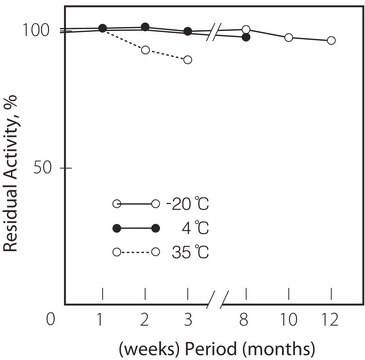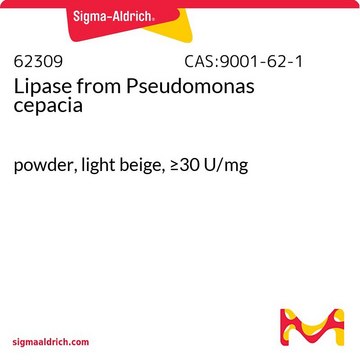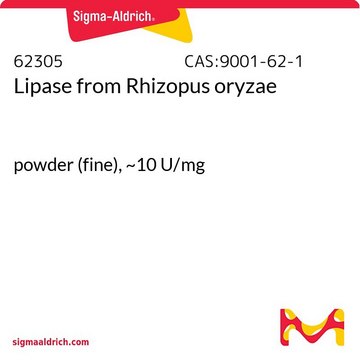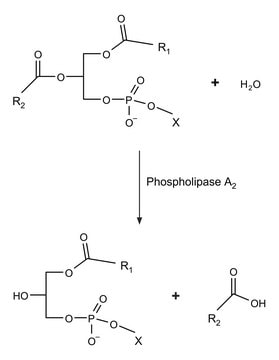C9281
Cholesterol Esterase from Pseudomonas fluorescens
lyophilized powder, ≥10,000 units/g protein
Sinónimos:
CE, bile salt-stimulated lipase, cholesteryl ester hydrolase, pancreatic cholesterol esterase, Sterol-ester acylhydrolase
About This Item
Productos recomendados
biological source
Pseudomonas fluorescens
Quality Level
assay
10-30% (TCA-Biuret)
form
lyophilized powder
specific activity
≥10,000 units/g protein
mol wt
~129 kDa
composition
Protein, ~20%
storage condition
under inert gas (argon)
technique(s)
cell based assay: suitable
color
tan to brown
pH
7-9
solubility
0.4 M potassium phosphate, pH 7.0: soluble 1.0 mg/mL
storage temp.
−20°C
¿Está buscando productos similares? Visita Guía de comparación de productos
General description
Cholesterol Esterase (CE) is a glycoprotein that can be isolated from fungal species such as Candida cylindracea and Pseudomonas fluorescens. It is classified as a member of the lipase/esterase family and functions as a homo-dimeric protein. CE is produced in the pancreas and is released in an active form upon stimulation by Cholecystokinin (CCK).
Application
- in cholesterol esterase assay to quantify total cholesterol from human blood serum samples
- a study to investigate the nondenaturing protein electro transfer of the esterase activity of lipolytic preparations
- an optimization study of components in enzymatic cholesterol reagents containing cholesterol oxidase
- for the modification of human plasma low-density-lipoprotein (LDL) to induce endothelial cell (EC) dysfunction and monocyte (MC) adhesion in the branched tissue-engineered blood vessels (TEBVs)
- to hydrolyze native cholesterol ester (CE) during filipin staining for detection of CE within the retinal frozen sections
Biochem/physiol Actions
Other Notes
Unit Definition
Analysis Note
signalword
Danger
hcodes
pcodes
Hazard Classifications
Resp. Sens. 1
Storage Class
11 - Combustible Solids
wgk_germany
WGK 1
flash_point_f
Not applicable
flash_point_c
Not applicable
ppe
Eyeshields, Gloves, type N95 (US)
Elija entre una de las versiones más recientes:
Certificados de análisis (COA)
¿No ve la versión correcta?
Si necesita una versión concreta, puede buscar un certificado específico por el número de lote.
¿Ya tiene este producto?
Encuentre la documentación para los productos que ha comprado recientemente en la Biblioteca de documentos.
Los clientes también vieron
Nuestro equipo de científicos tiene experiencia en todas las áreas de investigación: Ciencias de la vida, Ciencia de los materiales, Síntesis química, Cromatografía, Analítica y muchas otras.
Póngase en contacto con el Servicio técnico